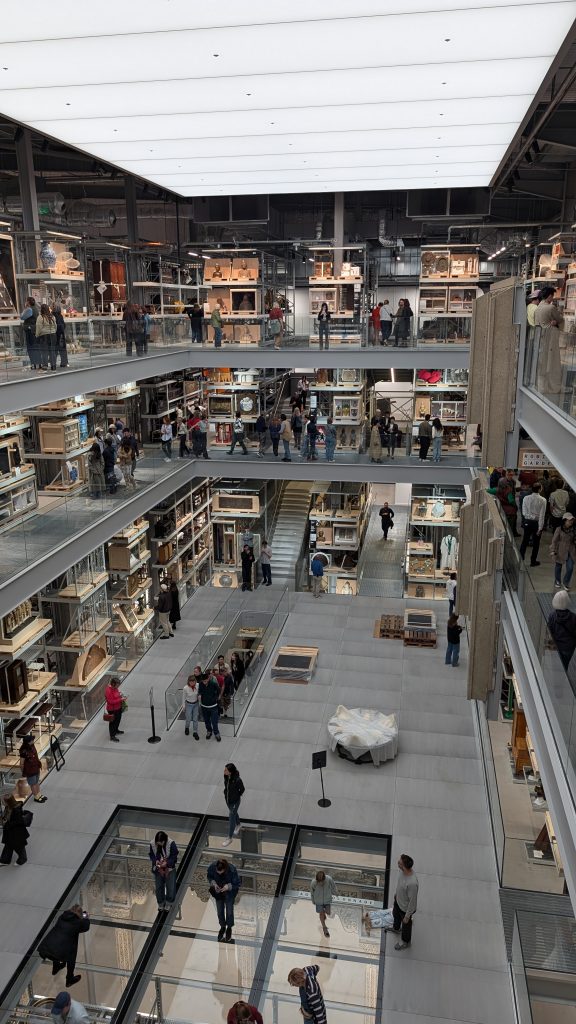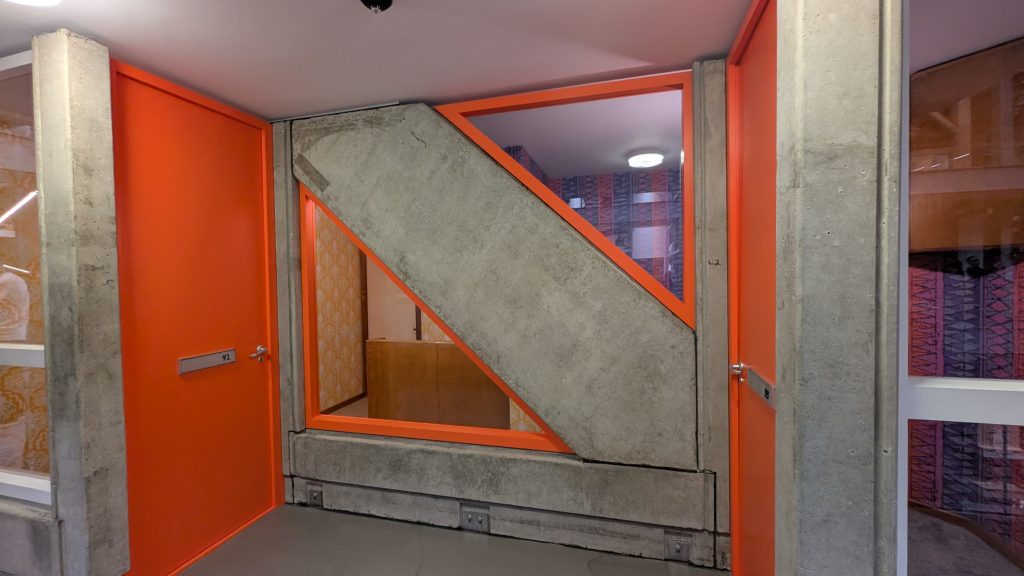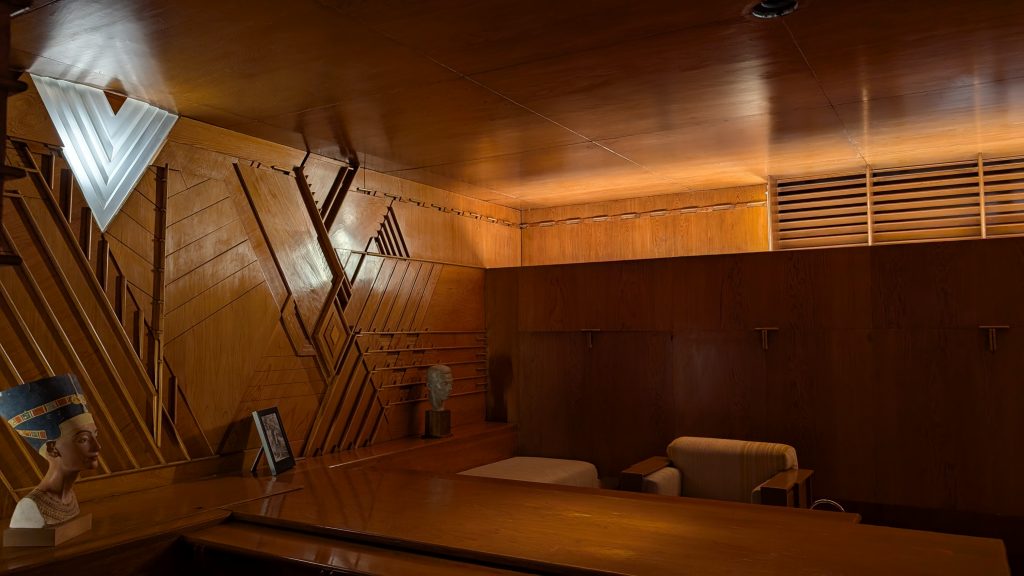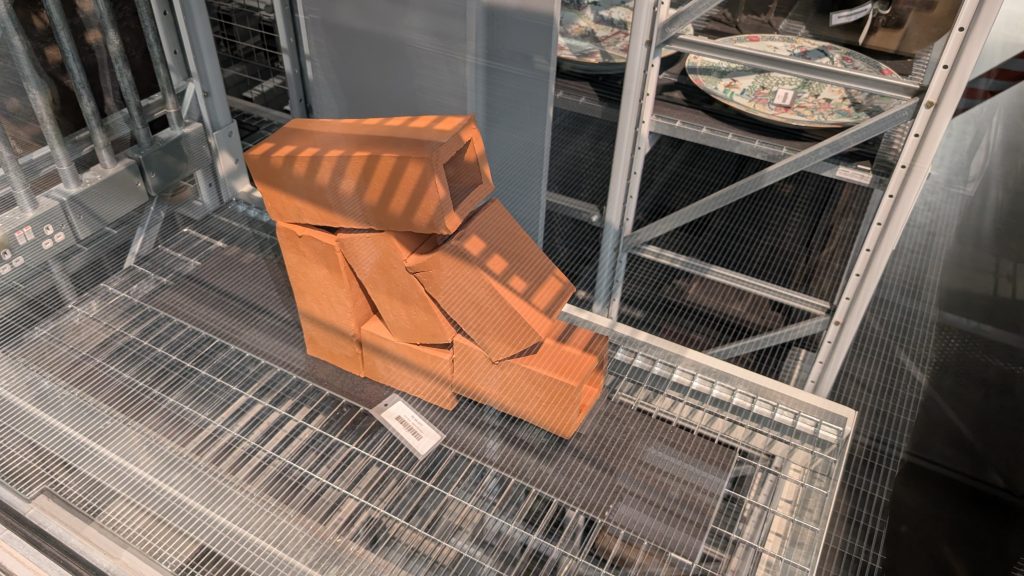It is unusual for me to celebrate a decision by the previous Conservative government, but in 2015, it was announced that Blythe House, where the Victoria & Albert Museum stored their non-display collection would be sold. The government then gave the V&A £50m to decant their 250,000 items and 350,000 books to a new space in Stratford. What has emerged from this decision to sell a building visited by a few thousand people a year is nothing short of a visionary reimagining of what a museum can be, for many people.
V&A Storehouse is based in the Queen Elizabeth Olympic Park and the route I took was a revelation in itself. I had been here during the Olympics, and at the time had loved the wildflowers laid out alongside the canal. Over a decade later, the park is still beautifully maintained but also old enough for you to feel like you aren’t in the middle of London. When you arrive at the Storehouse, you are greeted to a nondescript shed with the least imposing entrance known to museum-kind.

Having only been open a short time when I visited, there was an enormous queue to get inside but the staff on hand were friendly and helpful, showing you to a fairly narrow staircase plonked in the middle of the ground floor. The stairs lead you to the Collections Hall and here is the first piece of genius in the museum. You ascend the narrow stairs and immediately come face to face with a series of busts and statues, some on pallets, all tantalisingly close to you. You go up more stairs and suddenly you are in an enormous hall with a glass floor showing you the level below and the storehouse collections above you. The contrast from the narrow staircase to a world of art is spectacular. Not knowing where to look felt like part of the point, so we went where we felt like.

The higgledy-piggledy nature of the museum meant that while you might have been drawn to a frieze, the item next to it might well be a display of hats. Or a bunch of bricks. No idea what the bricks were from, but I was enchanted enough to photograph them. Set out across two levels of the museum is a recreation of a section of the Robin Hood Gardens estate, which makes up one of the five major exhibits that help to make sense of the place.

The other larger exhibits include the Torrijos Ceiling, a glorious ceiling which came from a palace in Spain. The palace was falling apart, so the owners started flogging parts of it in 1900. In 1917 the entire palace was demolished. The ceiling was installed in the V&A until it was placed in storage in 1993. Now it is on display once again, with cushions placed on wooden pallets allowing visitors to look up and marvel at the artefact.
The second piece of genius design is in how items are displayed. From underneath the Torrijos Ceiling, you get to see the spectacular design and from the staircase on the floor above, you get to see the back of the ceiling and how it all slots together. The museum succeeds brilliantly in doing this. The absolutely gorgeous Kaufmann office is an interior designed by Frank Lloyd Wright which is lit beautifully, with great attention to creating warmth. Immediately outside the office are wooden crates that hold the office together. This level of artifice is emphasised again in the recreation of the Frankfurt Kitchen. The window of the kitchen looks out on an overcast day in a city, only it’s just a hazy lighting display. In the storehouse itself, the lighting is austere, the floors are made of metal grilles, storage boxes never get unpacked. It is an intensely theatrical experience and feels as if the curator had to pop out before the museum opened fully.

The V&A storehouse feels like a pivotal point of museum history. Instead of having items hidden away from public view, the V&A can do something remarkable and show their stored items. What they have is a world class endowment of a little bit of everything. I’ve never seen anywhere like it and am so pleased that the V&A, which could be easily seen as stuffy, now feels entirely at ease with projecting a modern image and a new way of displaying their belongings.

